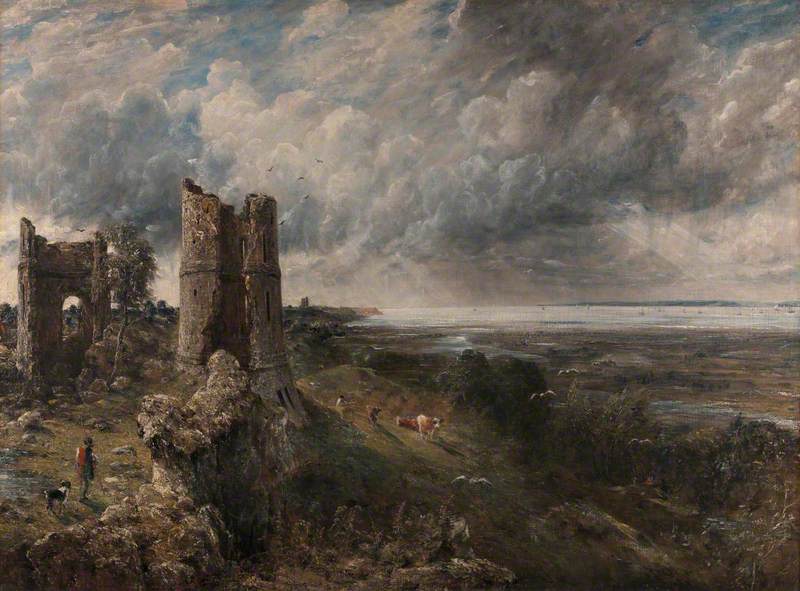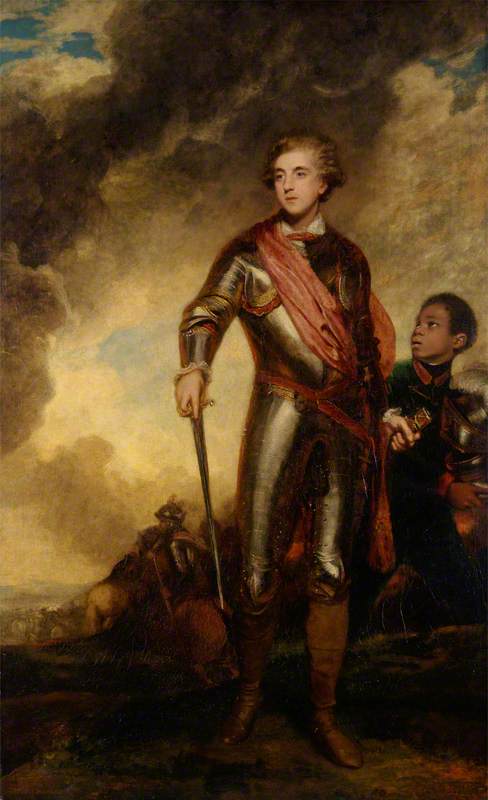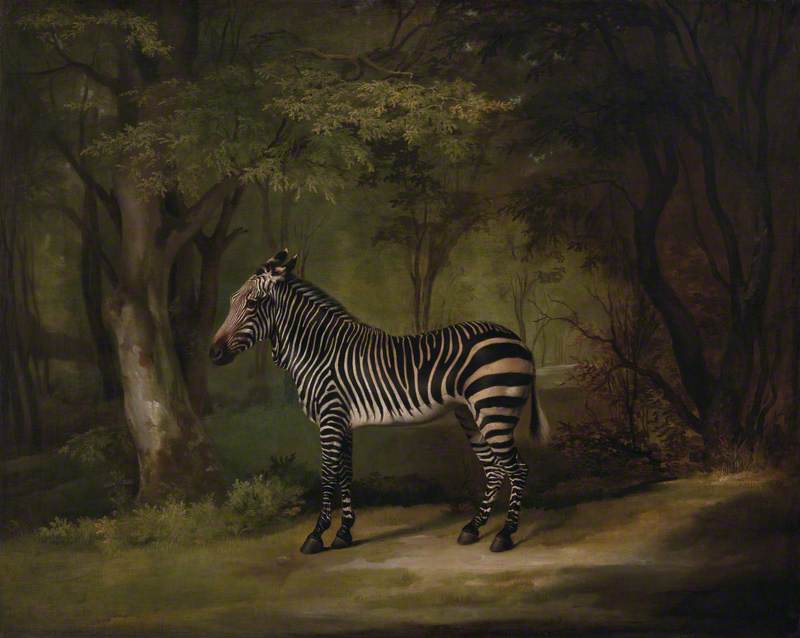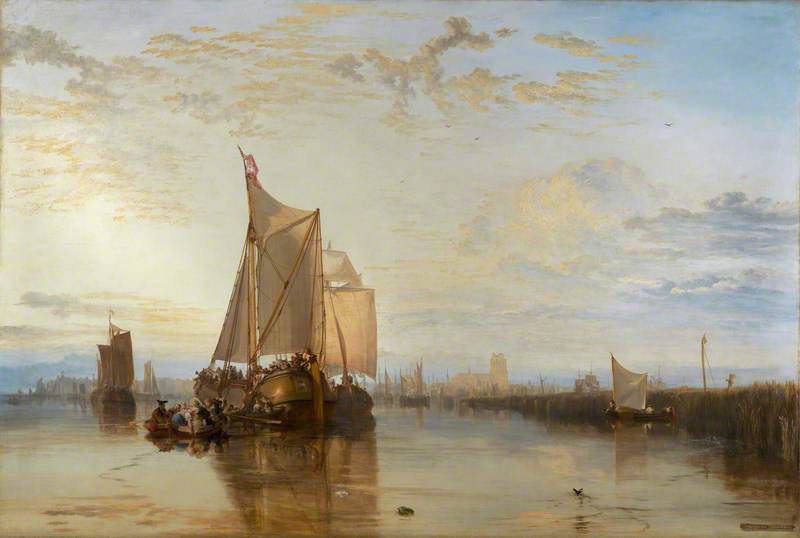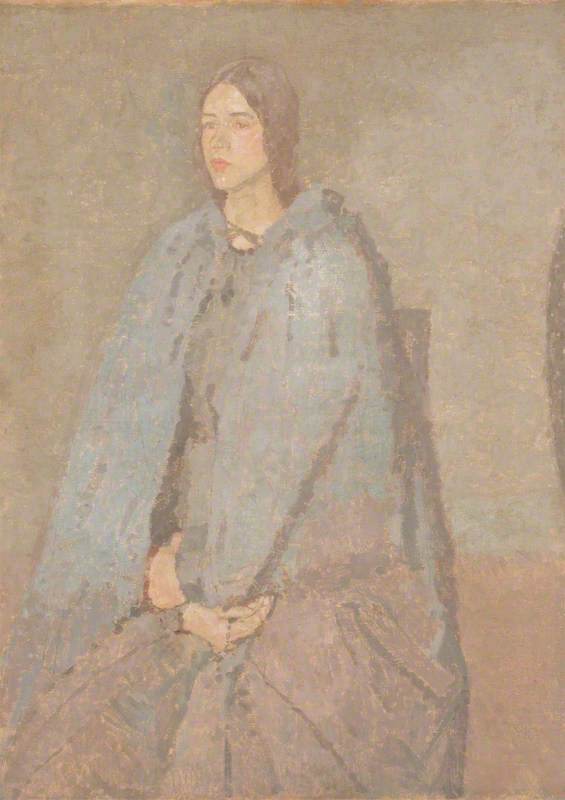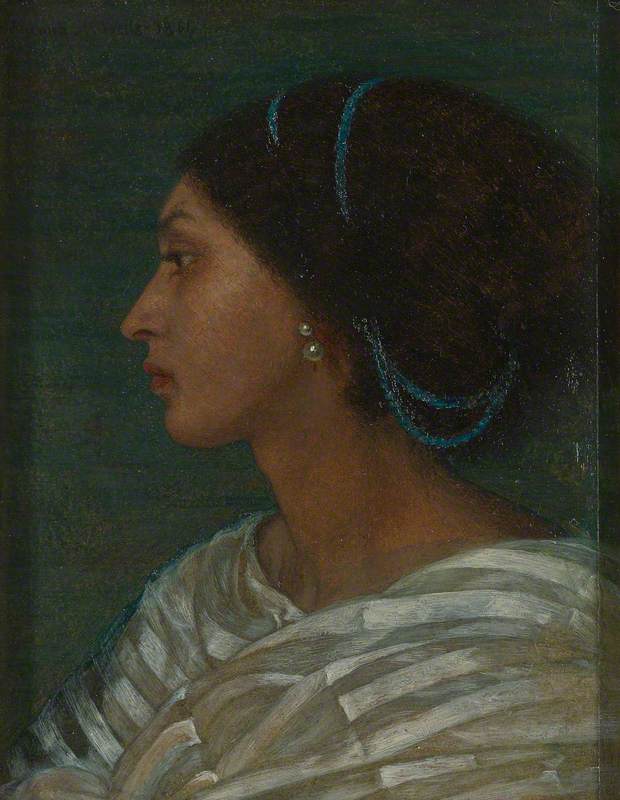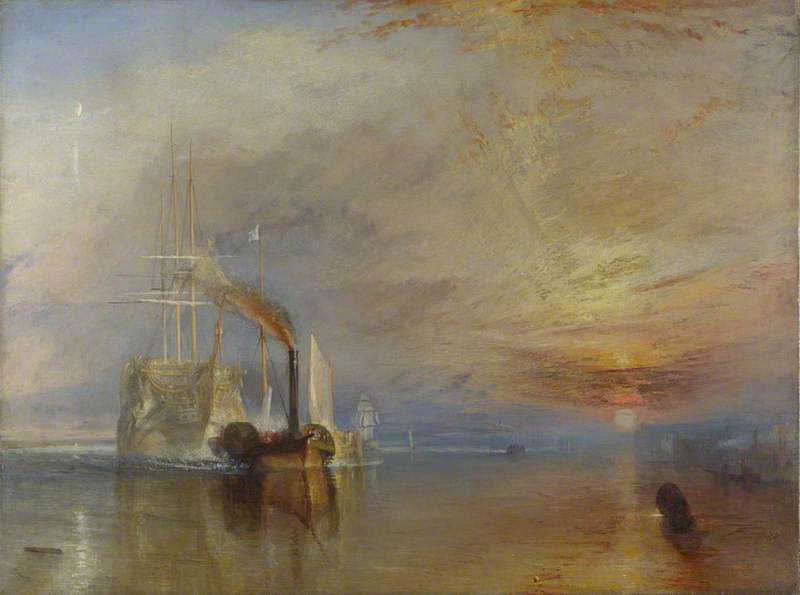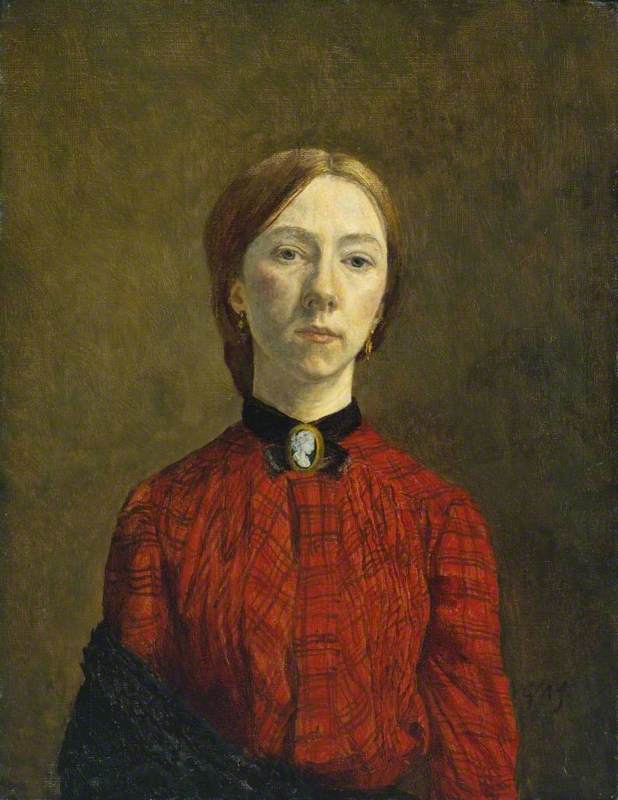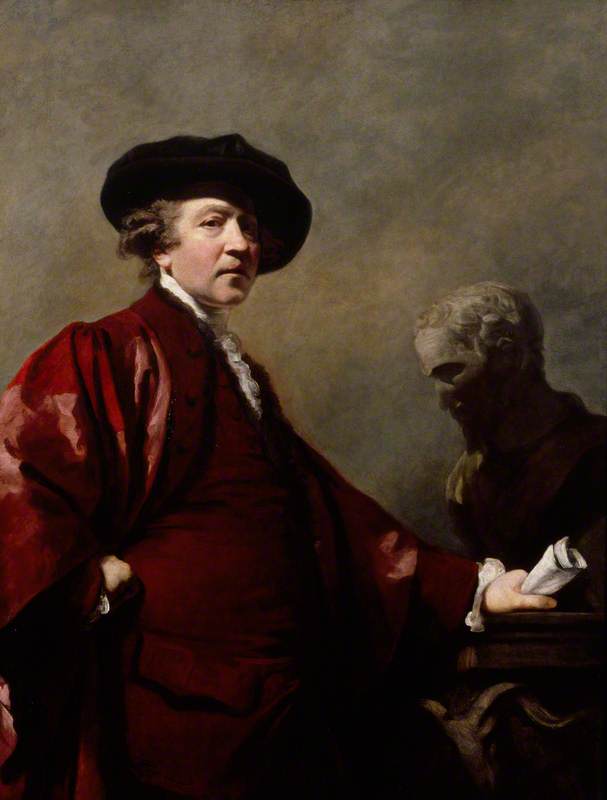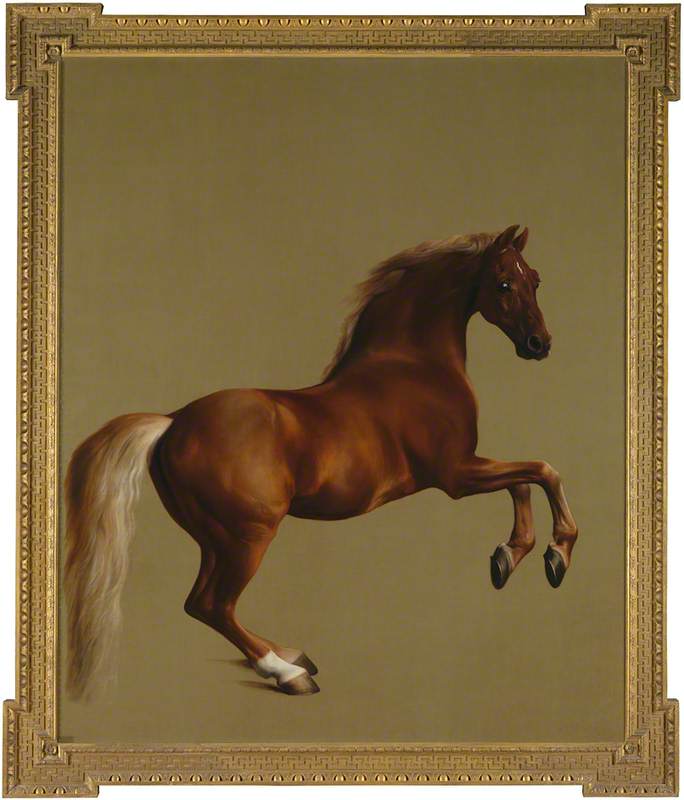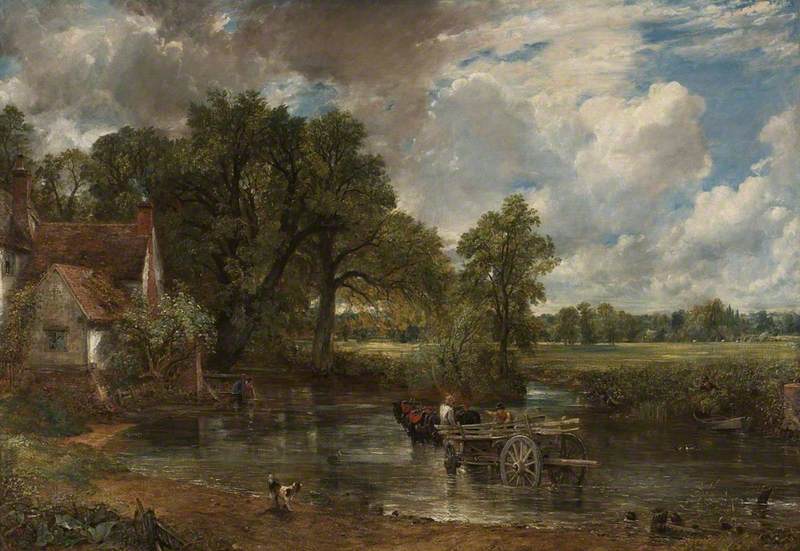Founded by Paul Mellon (Yale College, Class of 1929), the Yale Center for British Art is the largest museum outside of the United Kingdom devoted to British art. Located in the final building designed by Louis I. Kahn, the YCBA is a focal point for modernist architecture.
Art Unlocked is an online talk series by Art UK in collaboration with Bloomberg Philanthropies. This Curation is based on a talk by Martina Droth, Deputy Director and Chief Curator of the Yale Center for British Art, on 1st March 2023. You can watch a recording of the talk on Art UK's YouTube channel.
-
Hadleigh Castle, the Mouth of the Thames – Morning after a Stormy Night
Hadleigh Castle, The Mouth of the Thames – Morning after a Stormy Night 1829The ruins of Hadleigh Castle stand on the northern shore of the Thames estuary, overlooking the stretch of water known as the Nore, where the river meets the sea. Merchant ships come and go across the Nore, plying their trade with the far corners of the empire, a powerful contrast between modern civilization and the ruins of the feudal culture of the Middle Ages. John Constable made drawings at Hadleigh in 1814, remarking in a letter that he was “always delighted with the melancholy grandeur of the sea shore.” His grief following the death of his wife, Maria, in 1828 moved him to paint the view on a grand scale. He would be desolate and depressed, likening himself to a ruin, for the rest of his life. Looking toward the open sea, which gleams in the sunlight bursting through the clouds, his painting suggests the grief of a bereaved Christian looking toward heavenly consolation.
John Constable (1776–1837)
Oil on canvas
H 121.9 x W 164.5 cm
Yale Center for British Art
-
Charles Stanhope, 3rd Earl of Harrington and Marcus Richard Fitzroy Thomas
Charles Stanhope, 3rd Earl of Harrington and Marcus Richard Fitzroy Thomas 1782The fourteen-year-old boy in this portrait was recently identified as Marcus Richard Fitzroy Thomas. He sat for Reynolds on July 10, 1782—the day after Charles Stanhope, third Earl of Harrington, had a sitting. Stanhope had recently returned from a military post in Jamaica, and he likely brought Thomas—who may have been attached to his regiment or enslaved on a plantation owned by Stanhope’s stepfather-in-law—back to Britain as an attendant. Thomas was later baptized when he was nineteen, on the same day as Stanhope’s newborn child. Much remains to be uncovered about Thomas’s life, though parish registers reveal that he married and moved to Sussex, where his son John Henry was born in 1794. Thomas later returned to London, where in 1816 he died just thirteen days after he was admitted to a workhouse for the poor. He is buried in Camden Town Cemetery, now St. Martin’s Gardens.
Joshua Reynolds (1723–1792)
Oil on canvas
H 236.2 x W 142.2 cm
Yale Center for British Art
-
Zebra
Zebra 1763The zebra in this painting was owned by Queen Charlotte and was the sole survivor of a pair brought back from Southern Africa in 1762 by Sir Thomas Adams, the commanding officer of HMS Terpsichore. Though it wasn’t the first zebra on British shores—Prince Frederick had kept zebras at Kew in the 1740s—it was certainly the most visible. Charlotte’s zebra lived in a paddock near Buckingham House, where it was made available to a public with a thirst for exotic animals, spawning several, sometimes bawdy, tributes to “the Queen’s she-ass.” Beyond satire and public curiosity, the zebra was the subject of great scientific interest, as evidenced by Stubbs’s meticulously painted portrait, which may have been made with the assistance of the anatomists William and John Hunter. Stubbs’s incongruous setting (more forest glade than tended paddock) creates an air of melancholy, suggesting both the wonder and the costs of the Enlightenment.
George Stubbs (1724–1806)
Oil on canvas
H 102.9 x W 127.6 cm
Yale Center for British Art
-
Dort or Dordrecht: The Dort Packet-Boat from Rotterdam Becalmed
Dort or Dordrecht: The Dort Packet-Boat from Rotterdam Becalmed 1818J. M. W. Turner made his second Continental tour in 1817 in the aftermath of the Napoleonic Wars and passed through Dordrecht on his way home. This view, one of Turner’s masterpieces, was painted after his return to London in December 1817 and was exhibited at the Royal Academy in April 1818. The Swan, a packet boat from Rotterdam, is traveling down the river Meuse toward Dordrecht and is being provisioned by passing boats while it is becalmed. A vision of peaceful serenity, the picture contrasted with Turner’s other exhibit that year, a view of the bloody battlefield of Waterloo by moonlight. In Dort, Turner was emulating the celebrated Dutch painter Aelbert Cuyp (1620–1691), whose work was avidly collected by British connoisseurs. The painting’s extraordinary luminosity and brightness of color dazzled the critics, one of whom claimed it was “one of the most magnificent pictures ever exhibited.”
Joseph Mallord William Turner (1775–1851)
Oil on canvas
H 157.5 x W 233.7 cm
Yale Center for British Art
-
The Pilgrim
The Pilgrim c.1920Gwen John’s conversion to Catholicism in 1913 led her to discover the writings of the Carmelite nun Thérèse of Lisieux, who had died in 1897 at just twenty-four years old and was canonized in 1925. Thérèse had described a “little way” to holiness, through the humble acceptance of small sufferings and sacrifices in the monotony of daily life rather than through heroic acts of faith. This painting of a young woman, though larger than usual, is typical of John’s mature work, in which she relied on only a few models to produce paintings of solitary young women. They are rarely named and are typically posed in quiet contemplation, sometimes, as here, praying the Rosary. These images reflect a belief in the importance of embracing one’s insignificance and the superiority of prayer and contemplation over worldly action.
Gwen John (1876–1939)
Oil on canvas
H 73.7 x W 54.3 cm
Yale Center for British Art
-
Fanny Eaton (1835–1924)
Fanny Eaton (1835–1924) 1861Joanna Wells studied painting in London and Paris. She belonged to the circle of the Pre-Raphaelites and exhibited to acclaim for the first time in 1851, when John Ruskin warmly admired her work. Fanny Eaton was a biracial model of Jamaican heritage who posed for Wells and other Victorian artists such as Albert Moore, Frederick Sandys, and Dante Gabriel Rossetti. This small study was made in the last year of Wells’s life as she prepared a large canvas of Zenobia, the ancient queen of Syria. She died in childbirth before she could complete it.
Joanna Mary Wells (1831–1861)
Oil on paper laid to linen
H 17.1 x W 13.7 cm
Yale Center for British Art
